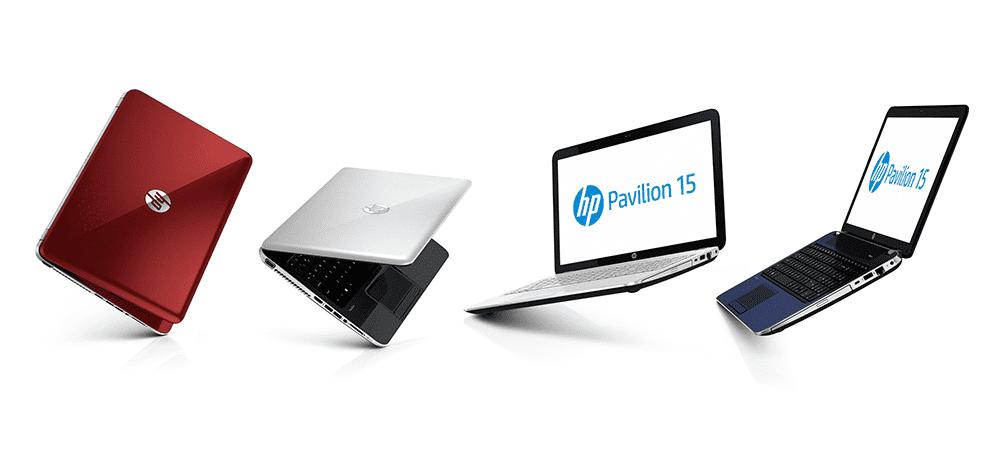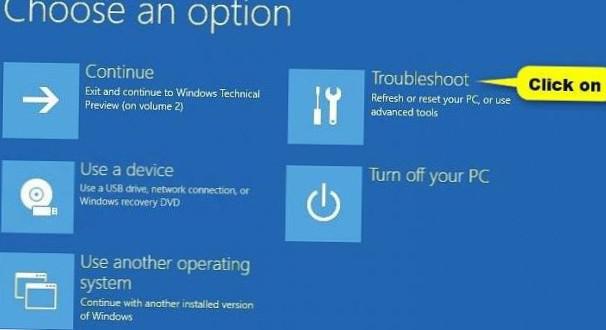Verdict
The HP Pavilion 15 is a sturdy, slick laptop that comes at a reasonable price. It packs plenty of performance under its silver hood while offering a sharp 1080p display and a decent-capacity SSD. However, the battery life is a disappointment for those who work on the go.
advantages
Powerful processor for everyday tasks
Solid display on most settings
Stylish, elegant appearance with good build quality
Disadvantages
Battery life below average
The display can be a bit dark in brighter settings
Non-backlit keyboard may be an issue for some
Important Specifications
Evaluation price: £850
15.6 inch 1920x1080 IPS
AMD Ryzen 4700U
16GB DDR4 RAM
Integrated AMD Radeon graphics
512GB SSD
Dimensions: 360 x 234 x 17.9mm
Weight: 1.75kg
The HP Pavilion 15 packs so much that it could be argued that it's above its weight as a mid-range laptop.
It comes with a powerful AMD fourth-generation Ryzen mobile chip, but it also offers some decent design features and a variety of ports.
And although it may not look as classy as a
Dell XPS 13
, or have the sheer grunt of the new
MacBook Air
, it might still be worth a look if you're looking for a bargain.
price and availability
The HP Pavilion 15-eh0014na model I have for review is currently available for £849.99 / $699.99 through HP's online store. This configuration features AMD's Ryzen 4700U mobile processor, a 512GB SSD, 16B RAM and integrated Radeon graphics.
This price makes it more expensive than that
Lenovo Yoga Slim 7
and Microsoft's
Go Surface Laptop.
This puts it in the frame for consideration for those who have some money to spend.
HP also offers a few cheaper models, including the HP Pavilion 15-eh0017na (£499) and HP Pavilion 15-eh0017na (£649.99 / $629.99). These laptops come with the Ryzen 3 4300U and Ryzen 5 processors 4500U and offer slower speeds but cheaper prices.
Design and Keyboard - Premium looks, solid keyboard and decent port selection
Good looking with some sharp and sleek design touches
The aluminum construction makes it feel sturdy and well built
Keyboard feels responsive, albeit with questionable layout
One of the first important things to note about the HP Pavilion 15 is that it doesn't really look like a mid-range office laptop. With its sharp edges and cool silver design, you'd think it was designed for gamers, just without the RGB glam.
It offers an attractive, understated look with a modern and pleasingly thin frame that still holds a 720p webcam for all your video conferencing needs. The build quality is robust, being primarily aluminum to ensure this device can withstand a drop.
The Pavilion 15 weighs significantly more than most of its competitors at 1.75kg, but is still portable enough to carry in a bag and carry around a university campus.
HP has opted for a touchscreen setup on this laptop, but since the Pavilion 15 isn't a convertible, bending the hinge back can only do harm.
The company also works with B&O to bring balanced audio performance to this business-class laptop. In addition, the speakers are mounted at an angle on the bottom of the laptop, so the sound isn't obstructed by your desk.
Even though the Pavilion 15 is a fairly slim kit, HP hasn't skimped on the port assignments. The laptop has two high-speed USB ports, a Thunderbolt 4/Type-C port, as well as an HDMI output, a headphone jack and a mic -SD card slot, offering plenty of compatibility with it. It's nice to see older ports included in a market where USB-As and HDMIs have sometimes been abandoned altogether.
There's also welcome Windows Hello support through the small fingerprint reader, which sits just below the keyboard's dedicated number pad and is easy to reach when needed.
The keyboard is pleasantly tactile, smooth, and responsive, which sets it apart from some of the more compact laptops on the market. One thing to note, however, is that it's not backlit, meaning it may not be the best option for working after the fade of the light is.
The Pavilion 15's trackpad is almost MacBook-sized, giving your fingers plenty of room to move. It's pleasingly smooth and tracking is accurate, with some fairly firm and responsive buttons.
Display – A 1080p display with some nice colors
1080p resolution is ideal for everyday use
16:9 aspect ratio is fine but a bit dated
250 nits brightness is not enough for super bright settings
For the Pavilion 15's display, HP relies on a proven Full HD 1080p resolution that is ideal for everyday work. The large 15.6-inch IPS display offers enough screen space for an ideal experience when streaming movies or watching TV .
Watching a few different shows on Prime Video and browsing the web, the screen is bright and colors are nicely vibrant. Viewing angles are pretty good too - although with a classic 16:9 aspect ratio, I feel like HP is behind the curve Most modern Ultrabooks have a 16:10 ratio, which is better for viewing websites.
The main downside of the HP screen is the brightness. HP claims a peak brightness of 250 nits, which is below the average of 300 nits expected from laptops. Based on my own experience surfing the web and watching videos, the brightness here is for okay indoors, but not really enough for excessively bright sunlight and presents a fairly reflective screen in some levels.
Performance - Business-class laptop with ultrabook performance
Ryzen 7 provides great computing power under load
Integrated graphics are good for casual gaming
The read and write operations of the SSD are disappointing

The HP Pavilion 15 comes with a fourth-generation processor, with the specific 15-eh0014na configuration on test here sporting the Ryzen 4700U. This is a similar chip to the one in the Lenovo Yoga Slim 7, and is more powerful than what that Surface Laptop Go offers – which has certainly helped this laptop deliver some surprising and quite promising results in the benchmarks.
It got some high riding scores in PCMark 10 and Geekbench 5 multi-core tests, putting the Pavilion 15 even higher than some of the more premium and expensive Windows Ultrabooks like this
Dell XPS 13
.This shows the performance gains that a Ryzen processor can bring, as well as the benefits of a decent amount of RAM.
HP Pavilion 15-eh0014na
Lenovo Yoga Slim 7
Dell XPS 13
processor
AMD Ryzen 4700U
AMD Ryzen 4800U
Intel Core i7-1165G7
Geekbench 5 multi
5408
6757
5687
PCMark 10
4915
5159
4802
3DMark time spy
1046
1364
1657
Even with a lot of Chrome tabs open, the 15-eh0014na didn't falter while browsing, and it's certainly up to the task of tackling any coursework or pressing deadlines that might need to be met.
There's even an option to indulge in some light gaming - but don't expect to get too crazy. It works well on less intense titles like Minecraft, but loading up a huge Football Manager database proved a bit too much.
The 15-eh0014na's 512GB SSD is pretty standard for Windows laptops at this price point, and its capacity is enough for everyday work. However, SSD read and write speeds remain at 1633MB/s and 922.7MB/s lags behind the competition, making saving and loading files on the physical drive comparatively sluggish.
Battery – A little overwhelming
Lasted 7 hours 30 minutes in the benchmark test
Durable for a working day
The benchmarks show that the HP Pavilion 15 is a notebook that outperforms its weight in terms of performance. Unfortunately, the same cannot be said for battery life.
With the brightness reduced to 50% and the PCMark 10 benchmark, which simulates office work, the HP lasted around seven and a half hours, which practically corresponds to the number specified by HP (seven and three quarters).
The Pavilion 15 doesn't fare well compared to the competition. Lenovo's Yoga Slim 7 lasted 14 hours 39 minutes, and our favorite budget Windows machine, Microsoft's Surface Go, managed 8 hours 45 minutes.
However, benchmarks are only one side of the story; in real-world testing, the 15-eh0014na comfortably lasted a workday before reclaiming the large charge to 100%.
Verdict on the HP Pavilion 15 (2020)
The HP Pavilion 15 is a well-built and classy-looking mid-range laptop with a tactile keyboard and decent port selection. It also offers some nicely balanced speakers and Ultrabook performance at a lower price point than most of the competition.
In everyday use, however, the Pavilion doesn't fare as well as the convertible Lenovo Yoga Slim with its slightly dimmed display and subpar battery life. That means, for those looking to add a bit of style to their office setup, this is a pretty good option.
You should buy the HP Pavilion 15 (2020) if...
You want a laptop with a bit of style
The HP Pavilion 15's modern looks and robust build quality make it ideal for anyone looking for a laptop that will last and look good in office meetings.
Interested in legacy ports
Many modern ultrabooks have abandoned what are now considered legacy ports, like older USB-As and HDMI. So it's nice to see HP supporting these instead of forcing you to convert to USB-C and Thunderbolt.
You want power through everyday work
With its excellent benchmark scores in PCMark 10 and Geekbench 5 multi-core tests, the Pavilion 15 is ideal for anyone who wants to handle their office workloads without lag.
You shouldn't buy the HP Pavilion 15 (2020) if...
You want the battery to last for several days
Since the Pavilion 15's battery only lasts about seven and a half hours, it's not the best device for multi-day work or for power users - there are other laptops that offer twice the battery life of the Pavilion 15.
You are looking for high performance
While the 15-eh0014na is a great option for everyday work, Apple's M1-powered MacBook Air offers the best value for money, costing just £100 more.
You like a bright screen
The HP's 250 nits brightness is fine for most conditions, but it lacks a bit of sharpness compared to other office-grade laptops that cost a little less.
This is how we test laptops
Unlike other sites, we test every laptop we review thoroughly over time. We use industry standard tests to properly compare features. We always tell you what we find. We never accept money to rate a product.
Learn more about how we test in our Ethics Policy.
Used as the main laptop during the test period
Tested for at least a week
Consistent benchmarks used for fair comparisons to other laptops
Verified against respected industry benchmarks and real-world usage
Trusted Score




![How to Factory Reset an HP Laptop [Step by Step] How to Factory Reset an HP Laptop [Step by Step]](https://website-google-hk.oss-cn-hongkong.aliyuncs.com/article-website/bing/2021/7/27/fc4dd80bc03f8cbff86a474def1853ba.jpg?x-oss-process=image/auto-orient,1/quality,q_70/format,jpeg)
